
目录
回调方法就是一个参数,将一个A方法作为参数传到B方法里面,当B方法执行完之后,再执行传进去的这个A方法,这个过程就叫做回调。
回调方法是类A调用类B的方法,然后B又在某个时候反过来调用类B的方法a,这个a就是回调方法.
回调方法实现
回调方法就是一个参数,将一个A方法作为参数传到B方法里面,当B方法执行完之后,再执行传进去的这个A方法,这个过程就叫做回调。
回调方法是类A调用类B的方法,然后B又在某个时候反过来调用类B的方法a,这个a就是回调方法.
用反射实现

main方法
package com.tianju.callback;
public class Main {
public static void main(String[] args) throws Exception{
Request request = new Request();
System.out.println("[Main]:我开了一个线程去异步发送请求");
new Thread(()->{
try {
request.send(Callback.class, Callback.class.getMethod("processResponse"));
} catch (Exception e) {
throw new RuntimeException(e);
}
}).start();
System.out.println("[Main]:请求发送完毕,do other things");
Thread.sleep(10000);
}
}
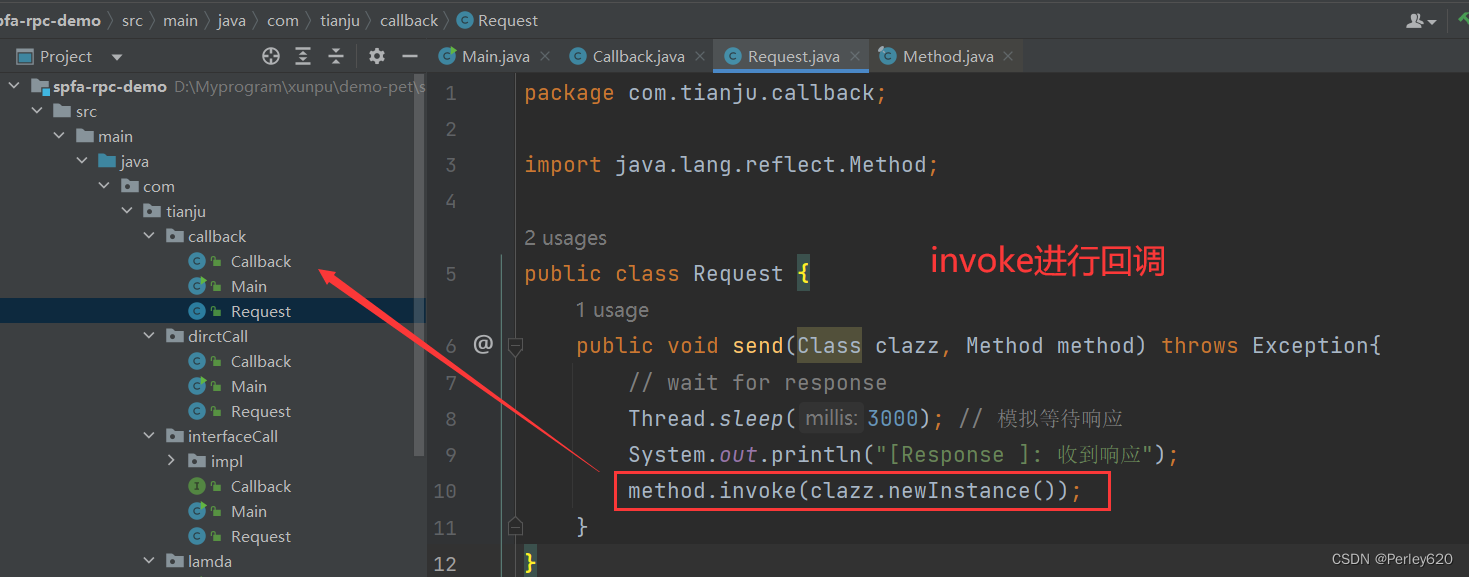
package com.tianju.callback;
import java.lang.reflect.Method;
public class Request {
public void send(Class clazz, Method method) throws Exception{
// wait for response
Thread.sleep(3000); // 模拟等待响应
System.out.println("[Response ]: 收到响应");
method.invoke(clazz.newInstance());
}
}
callback
package com.tianju.callback;
public class Callback {
// callback details
public void processResponse(){
System.out.println("[callback]: 处理响应");
}
}
直接调用callback

main
package com.tianju.dirctCall;
public class Main {
public static void main(String[] args) throws Exception{
Request request = new Request();
System.out.println("[Main]:我开了一个线程去异步发送请求");
Callback callback = new Callback();
new Thread(()->{
try {
request.send(callback);
} catch (Exception e) {
throw new RuntimeException(e);
}
}).start();
System.out.println("[Main]:请求发送完毕,do other things");
Thread.sleep(10000);
}
}
request
package com.tianju.dirctCall;
public class Request {
public void send(Callback callback) throws Exception{
// wait for response
Thread.sleep(3000); // 模拟等待响应
System.out.println("[Response ]: 收到响应");
callback.processResponse();
}
}
进化:接口实现分离
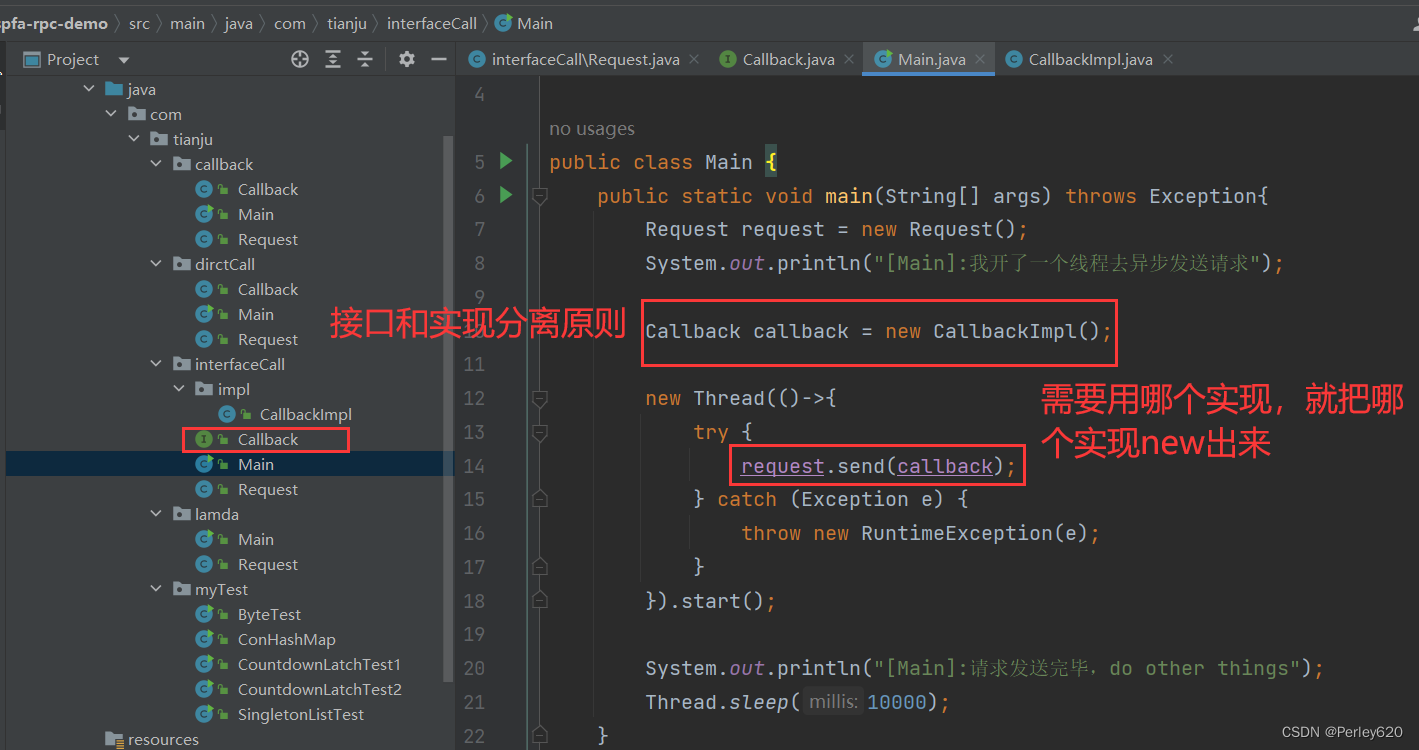
匿名内部类 到 函数式编程
可以实现匿名内部类
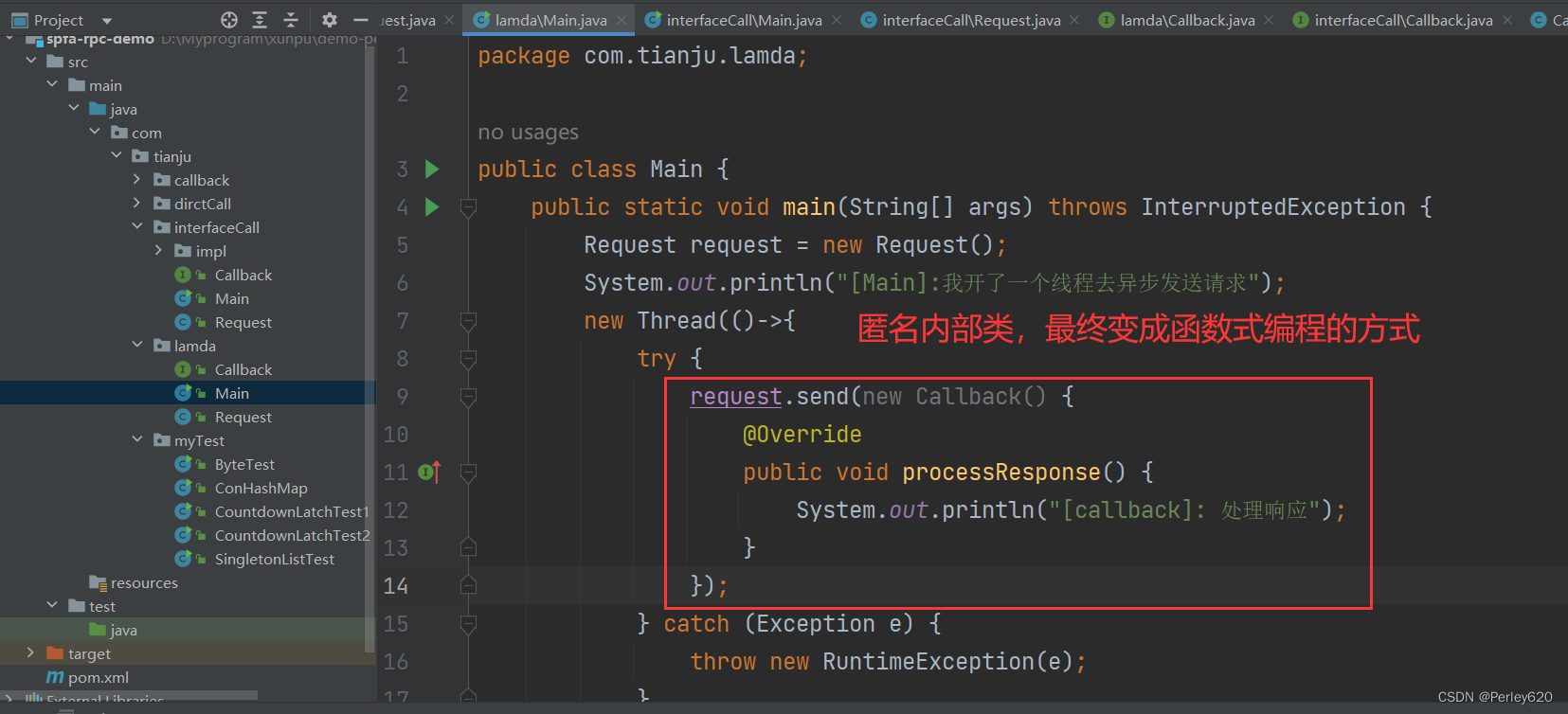
package com.tianju.lamda;
public class Main {
public static void main(String[] args) throws InterruptedException {
Request request = new Request();
System.out.println("[Main]:我开了一个线程去异步发送请求");
new Thread(()->{
try {
request.send(new Callback() {
@Override
public void processResponse() {
System.out.println("[callback]: 处理响应");
}
});
} catch (Exception e) {
throw new RuntimeException(e);
}
}).start();
System.out.println("[Main]:请求发送完毕,do other things");
Thread.sleep(10000);
}
}
最终进化的形态,函数式编程
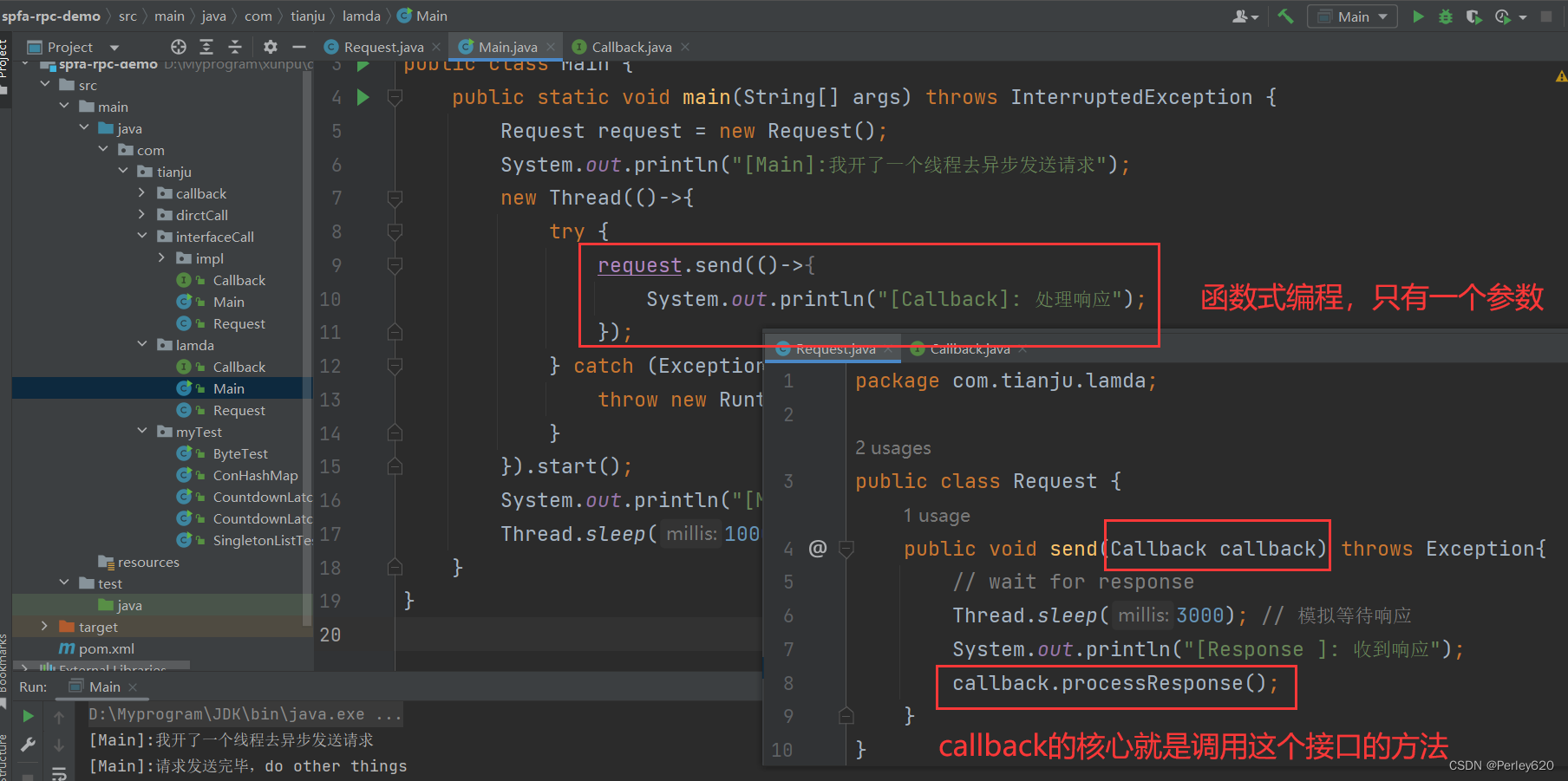
main
package com.tianju.lamda;
public class Main {
public static void main(String[] args) throws InterruptedException {
Request request = new Request();
System.out.println("[Main]:我开了一个线程去异步发送请求");
new Thread(()->{
try {
request.send(()->{
System.out.println("[Callback]: 处理响应");
});
} catch (Exception e) {
throw new RuntimeException(e);
}
}).start();
System.out.println("[Main]:请求发送完毕,do other things");
Thread.sleep(10000);
}
}
从系统调用角度理解回调
应用系统模块之间的调用,通常分为:同步调用,异步调用,回调。
同步调用

同步调用是最基本的调用方式。类A的a()方法调用类B的b()方法,类A的方法需要等到B类的方法执行完成才会继续执行。如果B的方法长时间阻塞,就会导致A类方法无法正常执行下去。
异步调用
如果A调用B,B的执行时间比较长,那么就需要考虑进行异步处理,使得B的执行不影响A。通常在A中新起一个线程用来调用B,然后A中的代码继续执行。
异步通常分两种情况:第一,不需要调用结果,直接调用即可,比如发送消息通知;第二,需要异步调用结果,在Java中可使用Future+Callable实现。
不需要对方结果

需要对方的结果
回调属于一种双向的调用方式。回调的基本上思路是:A调用B,B处理完之后再调用A提供的回调方法(通常为callbakc())通知结果。

菜鸡问大佬问题案例
同步回调
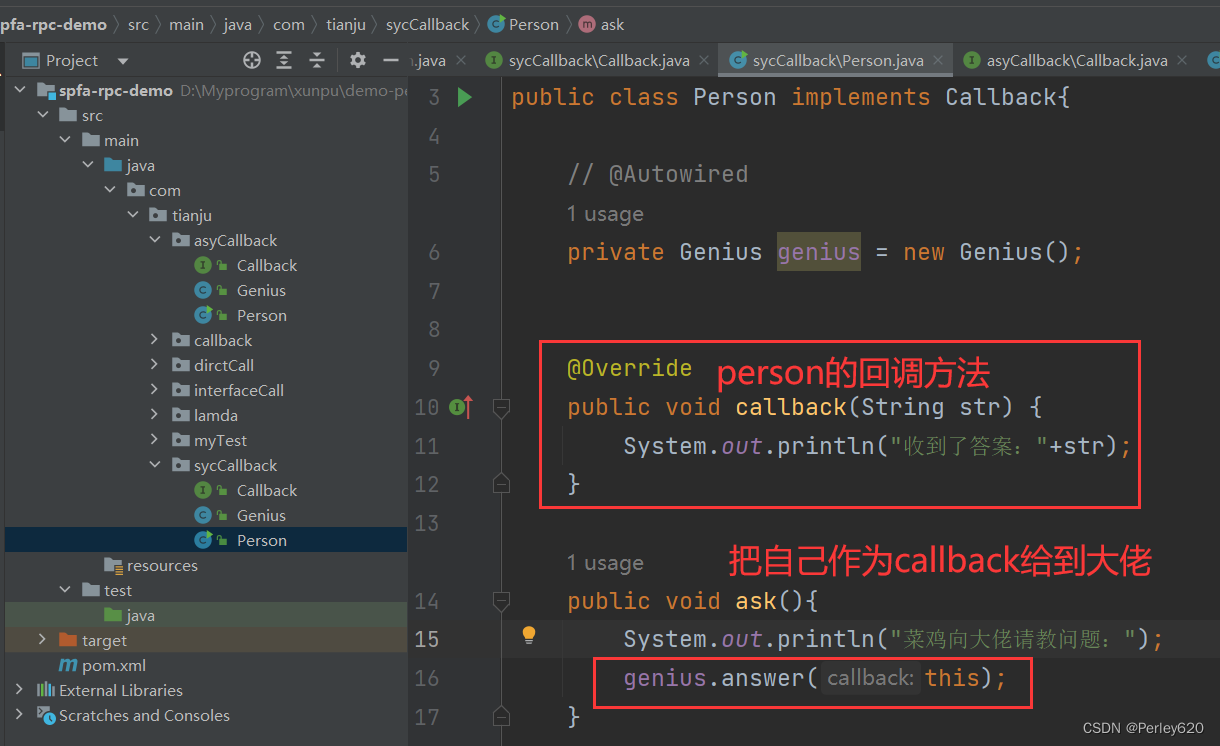
package com.tianju.sycCallback;
public interface Callback {
void callback(String str);
}
package com.tianju.sycCallback;
public class Person implements Callback{
// @Autowired
private Genius genius = new Genius();
@Override
public void callback(String str) {
System.out.println("收到了答案:"+str);
}
public void ask(){
System.out.println("菜鸡向大佬请教问题:");
genius.answer(this);
}
public static void main(String[] args) {
Person person = new Person();
person.ask();
}
}
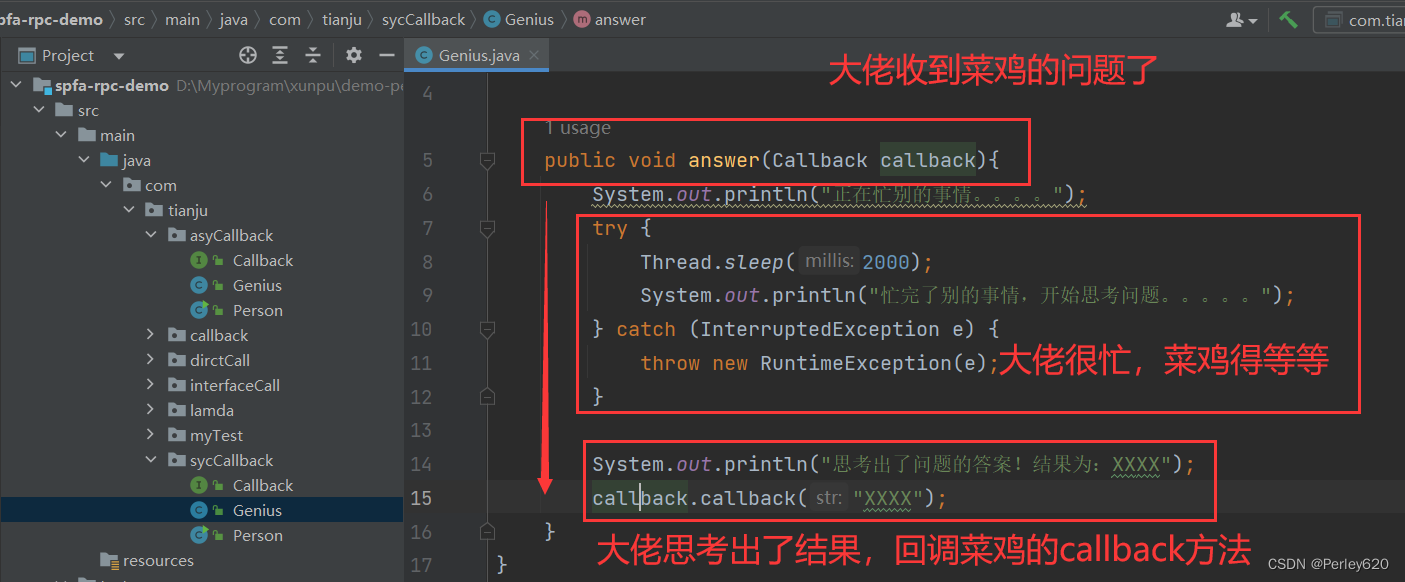
package com.tianju.sycCallback;
public class Genius {
public void answer(Callback callback){
System.out.println("正在忙别的事情。。。。");
try {
Thread.sleep(2000);
System.out.println("忙完了别的事情,开始思考问题。。。。。");
} catch (InterruptedException e) {
throw new RuntimeException(e);
}
System.out.println("思考出了问题的答案!结果为:XXXX");
callback.callback("XXXX");
}
}
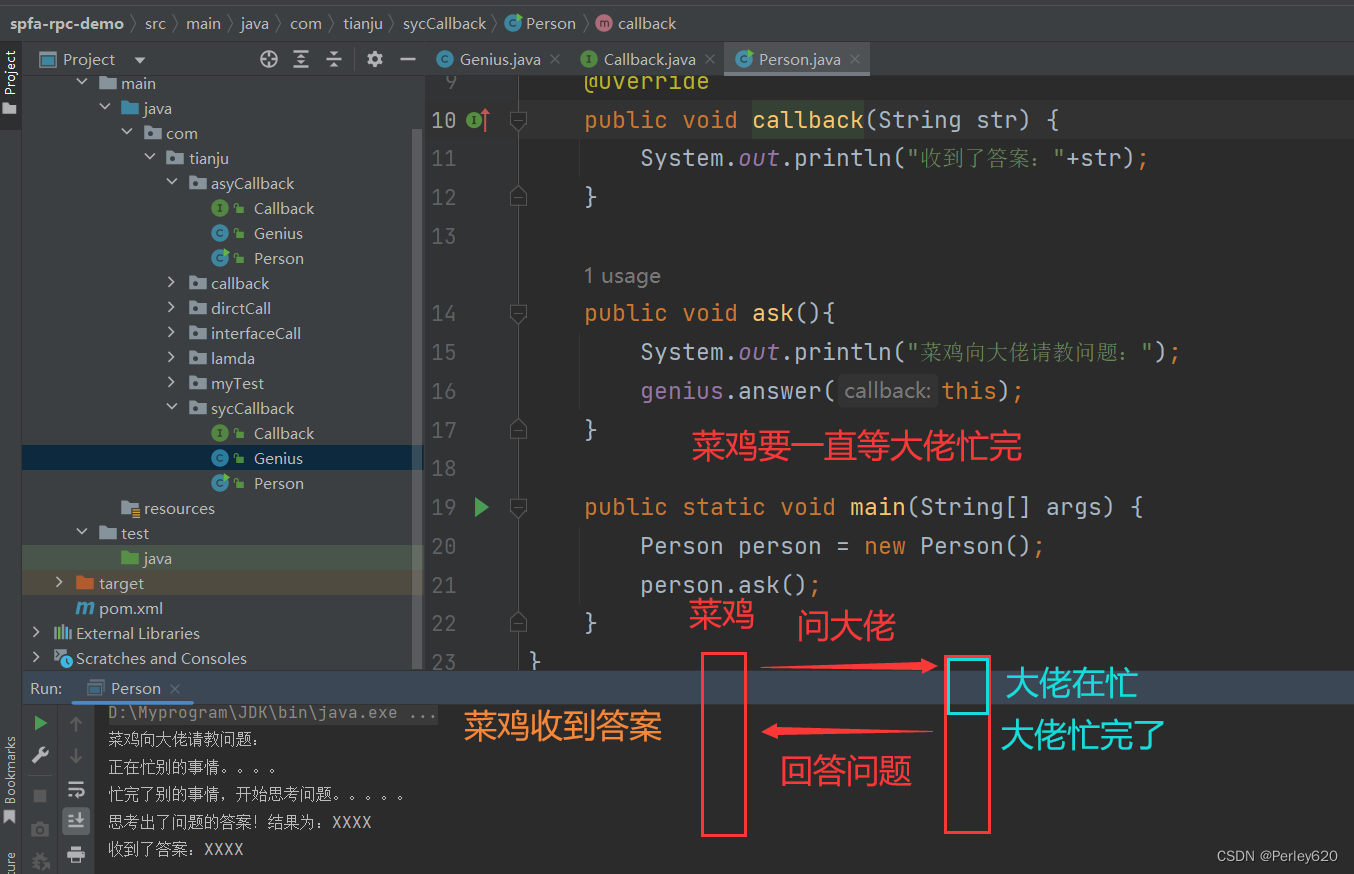
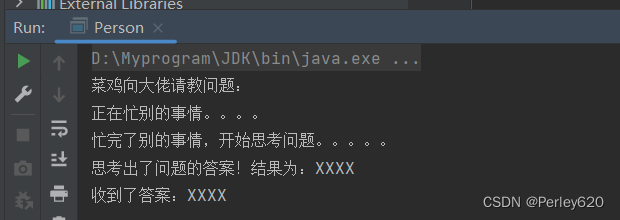
异步回调
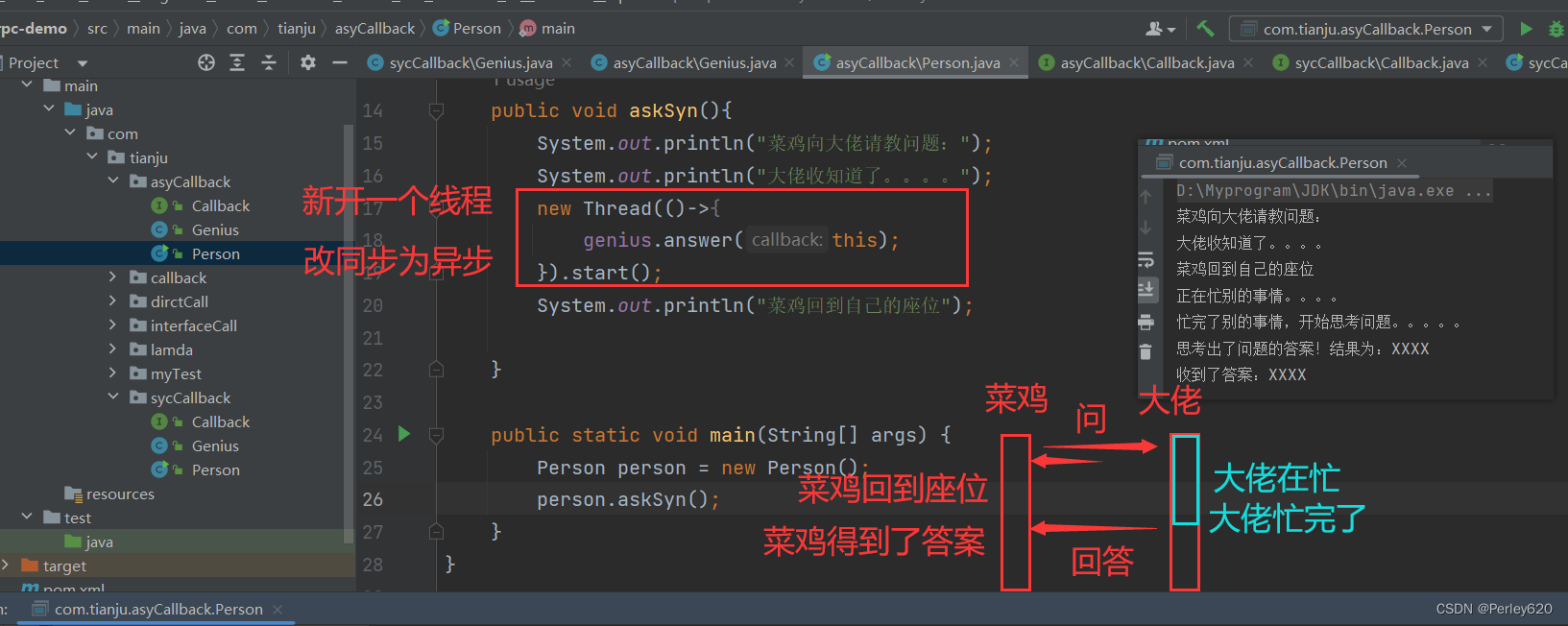
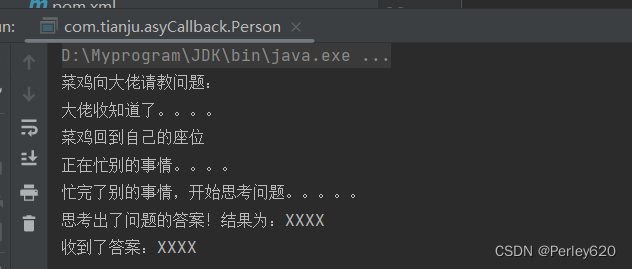
package com.tianju.asyCallback;
public class Person implements Callback {
// @Autowired
private Genius genius = new Genius();
@Override
public void callback(String str) {
System.out.println("收到了答案:"+str);
}
public void askSyn(){
System.out.println("菜鸡向大佬请教问题:");
System.out.println("大佬收知道了。。。。");
new Thread(()->{
genius.answer(this);
}).start();
System.out.println("菜鸡回到自己的座位");
}
public static void main(String[] args) {
Person person = new Person();
person.askSyn();
}
}
基于Future的半同步
在Java使用nio后无法立即拿到真实的数据,而是先得到一个"future",可以理解为邮戳或快递单,为了获悉真正的数据我们需要不停的通过快递单号"future"查询快递是否真正寄到。
Futures是一个抽象的概念,它表示一个值,在某一点会变得可用。一个Future要么获得计算完的结果,要么获得计算失败后的异常。
通常什么时候会用到Future呢?一般来说,当执行一个耗时的任务时,使用Future就可以让线程暂时去处理其他的任务,等长任务执行完毕再返回其结果。
经常会使用到Future的场景有:1. 计算密集场景。2. 处理大数据量。3. 远程方法调用等。
Java在 java.util.concurrent包中附带了Future接口,它使用Executor异步执行。
例如下面的代码,每传递一个Runnable对象到ExecutorService.submit()方法就会得到一个回调的Future,使用它检测是否执行,这种方法可以是同步等待线处理结果完成

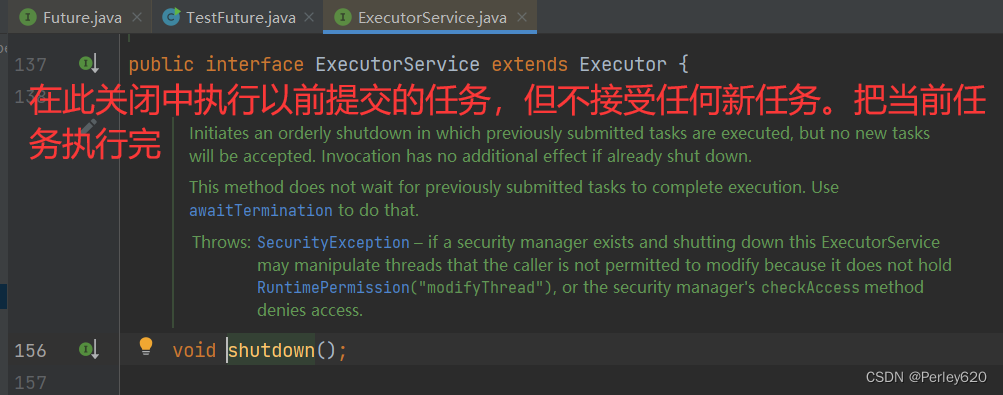
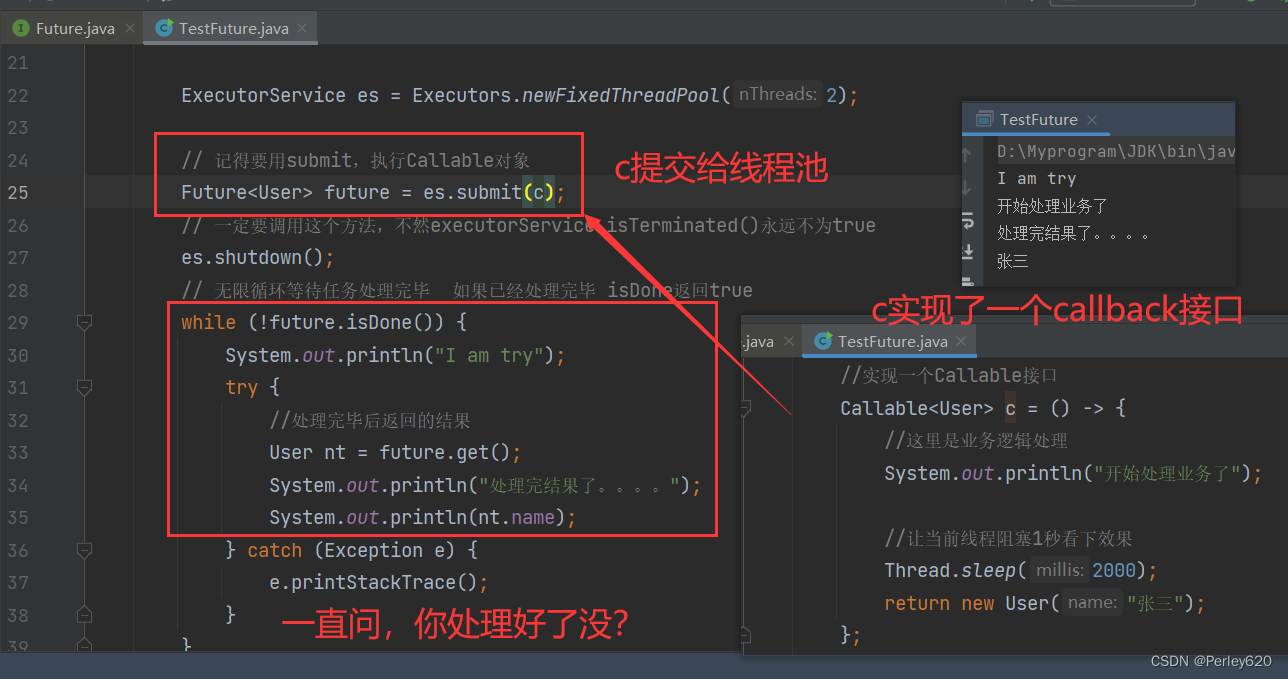
package com.tianju.future;
import java.util.concurrent.Callable;
import java.util.concurrent.ExecutorService;
import java.util.concurrent.Executors;
import java.util.concurrent.Future;
public class TestFuture {
public static void main(String[] args) {
//实现一个Callable接口
Callable<User> c = () -> {
//这里是业务逻辑处理
System.out.println("开始处理业务了");
//让当前线程阻塞1秒看下效果
Thread.sleep(2000);
return new User("张三");
};
ExecutorService es = Executors.newFixedThreadPool(2);
// 记得要用submit,执行Callable对象
Future<User> future = es.submit(c);
// 一定要调用这个方法,不然executorService.isTerminated()永远不为true
// 在此关闭中执行以前提交的任务,但不接受任何新任务。把当前任务执行完
es.shutdown();
// 无限循环等待任务处理完毕 如果已经处理完毕 isDone返回true
while (!future.isDone()) {
System.out.println("I am try");
try {
//处理完毕后返回的结果
User nt = future.get();
System.out.println("处理完结果了。。。。");
System.out.println(nt.name);
} catch (Exception e) {
e.printStackTrace();
}
}
}
static class User {
private String name;
private User(String name) {
this.name = name;
}
}
}
参考文章:https://zhuanlan.zhihu.com/p/349951124























 1344
1344











 被折叠的 条评论
为什么被折叠?
被折叠的 条评论
为什么被折叠?










